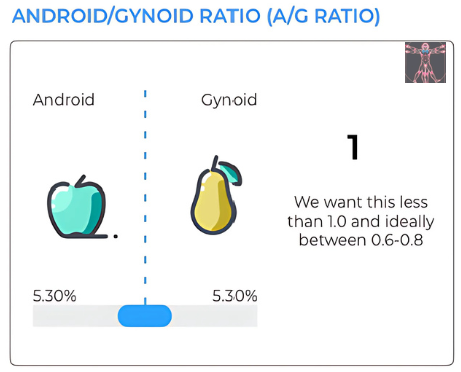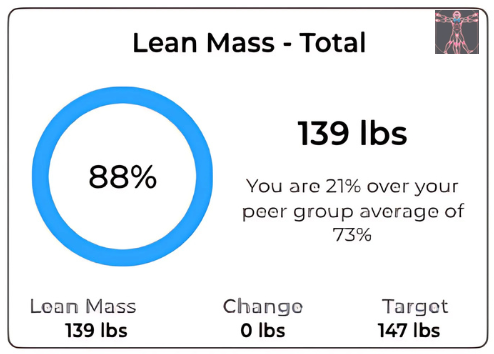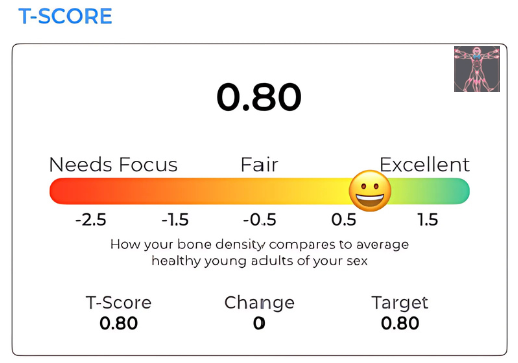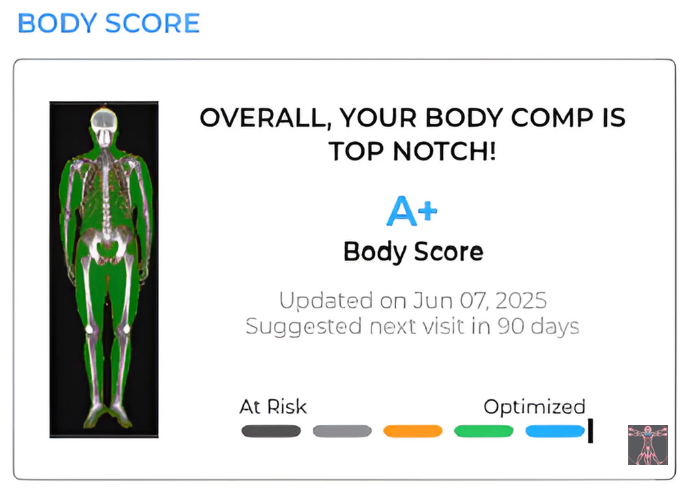My 2025 DEXA Results
How the Phys fat loss protocol performed
Few better ways to complete a fat loss phase than a full-body DEXA scan.
Back in April when I started my quick (too rapid) mini-cut, I scheduled out my first ever DEXA scan for this past weekend (June 7, 2025) to give myself an exact target to shoot for. A nice little psychological hack.
The intent of the post here is to walk through each section of the report. Highlight some of what went well, what could be improved, & most importantly what each marker here means if you choose to conduct one yourself in the future. I won’t dive into the details of what my protocol entailed just yet. I’ll leave that for a more in-depth post next week.
Let’s get into it. All the results laid out below.
First, some preliminary information on me:
Beginning Weight: 172 lbs
End Weight: 157 lbs
Height: 68”
Cut Duration: 6 weeks (April 24, 2025 - June 7, 2025)
Rate of Loss: 2.5 lb/week (Note → This is too rapid. Chad rammed this one due to a packed summer schedule. ~1.0 lb/week is ideal.)
Body Fat Analysis
Total Body Fat %
Body Fat Distribution
In addition to the total body fat % provided, there’s also a three-section fat distribution analysis across the arms, trunk, & legs. Even distribution in my case.
Visceral Fat
The result I was most pleased with: 0 lbs of visceral fat. The operator mentioned she’s never seen a 0 lbs registered in her ~8 yrs of doing these. One of the more important biomarkers we can monitor for metabolic health & something I shoot to optimize for.
How does this compare across age groups?
Android vs. Gynoid Ratio
The A/G ratio represents how body fat is stored across the body:
Android → store more fat around belly & midsection
Gynoid → store more fat around hips & thighs
Even distribution of fat storage across the midsection & legs here.
Lean Mass Analysis
As I alluded to earlier, this was a rapid cut for me & likely led to more muscle loss in the process than usual.
Lean Mass Distribution
Similar to how there’s a three-part body fat distribution, same applies for lean mass. Some asymmetry in the trunk favoring the left side, with subtle differences in legs & arms.
Interesting results (though not to the point of concern) here considering I am right-handed. This may be a function of resistance training form & something I’ll monitor in the coming months.
Appendicular Lean Mass Index
ALMI is defined as the lean mass in the arms & legs divided by the square of the height.
Fat-Free Mass Index
FFMI represents the fat-free mass (everything in our body that’s not fat = muscle, bone, organs, & water) divided by the square of the height.
Bone Mineral Density Analysis
The final component to the whole-body DEXA scan is an assessment of skeletal health.
T-Score
The T-score is considered the gold standard of measurement for monitoring bone health since it provides a standardized comparison to the bone mineral density of healthy young adult at peak bone mass.
Higher the score → denser the bone tissue → lower the risk of fracture/osteoporosis
Bone Mineral Density
BMD is derived by dividing the bone mineral weight by the area of bone scanned in a specific area of the body.
Body Score
The final piece provided is this “Body Score” I don’t personally give much reverence to. All it represents is a composite score from all the quantitative markers we just reviewed: body fat %, lean mass, total mass, visceral fat, & skeletal health.
Alright that’s a wrap on the full report. All out in the open for you. If you’re interested in getting one of these completed & have any questions on the process/where you can do one - drop a comment below. Happy to address those.
Remember: The only person worth comparing yourself to is “last week you”. What’s yours is yours. What’s mine is mine.
Next week, I’ll be releasing a closer look at my comprehensive (& non-neurotic) fat loss protocol leading up to the test. As always, take what fits & leave what doesn’t.
Until next time,
Phys
***Disclaimer: The information provided by BowTiedPhys is for educational purposes only. This content is not intended to be a substitute for professional medical advice, diagnosis, or treatment of any kind. BowTiedPhys is not a licensed medical provider. Prior to making any changes to your health protocols, consult a licensed healthcare professional. Some of the links in this post may be affiliate links - BowTiedPhys may earn a commission at no additional cost to you. This commission helps support our work and allows us to continue providing valuable content to our valued subscription members.***


















